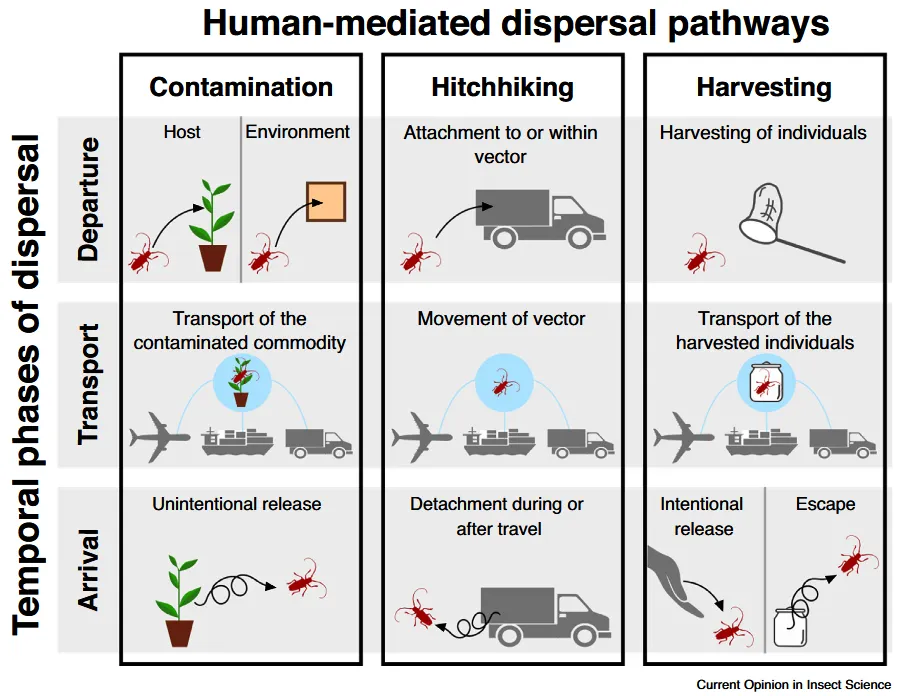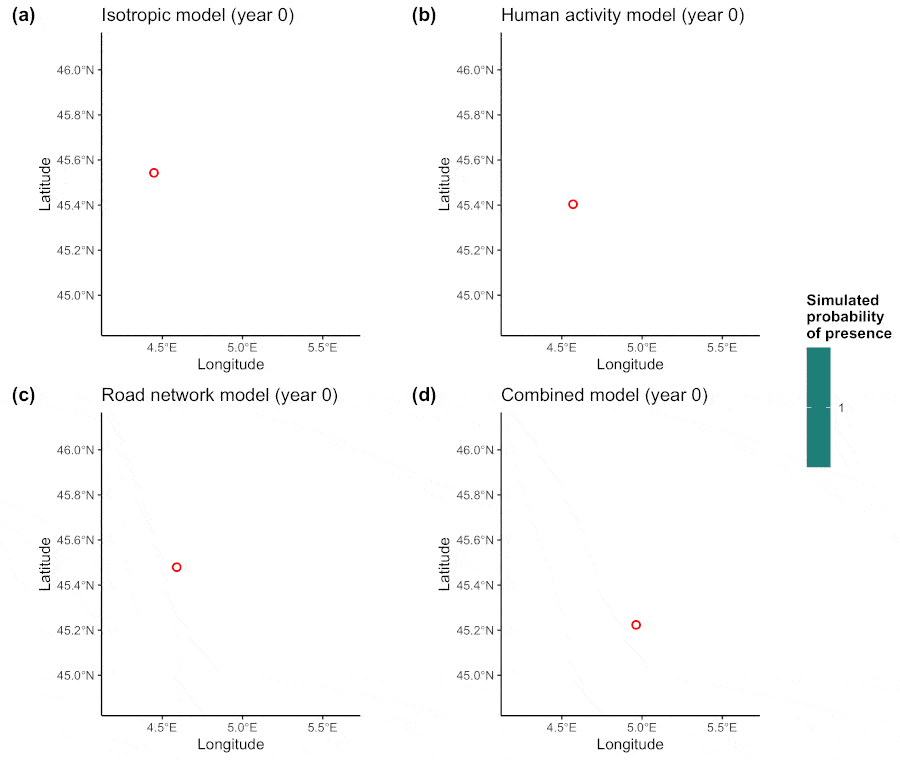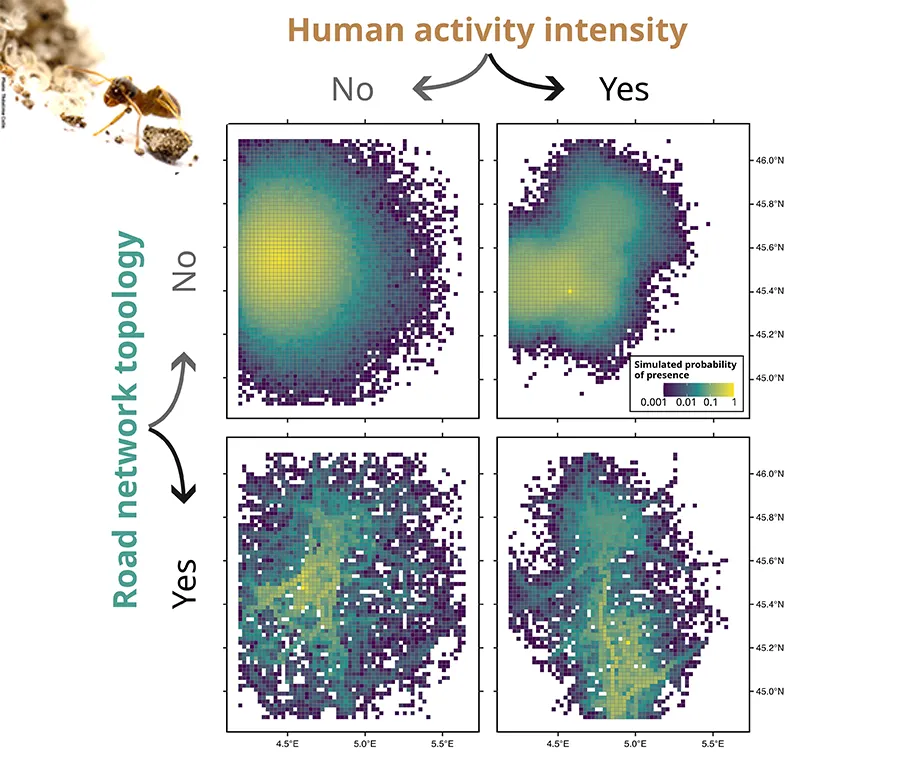

Biological invasions are one of the main drivers of the erosion and redistribution of biodiversity on Earth. Human trade and movements are central to biological invasions as they create opportunity for species dispersal beyond the biogeographical barriers that previously constrained their range. I am particularly passionate about understanding and modelling how human activities drive (metaphorically and literally) the spread of other animal and plant species at the multiple spatial scales

I think that it is crucial to decompose human-mediated dispersal into phases (departure, transport and arrival) and pathways, if we want to better understand this phenomenon, model it, and predict its consequences on species distribution. Contamination and hitchhiking pathways are accidental while in the harvesting pathway, species are intentionally captured and transported but arrival can be either intentional (release) or unintentional (escape). (Figure from Gippet et al. (2019) COIS)
Human activities not only transport species across biogeographical barriers, but also accelerate their post-introduction spread in the landscape. In the last 10 years, Charles Rocabert and I have created (from scratch), MoRIS: a unique simulation-based mechanistic landscape HMD model. Using MoRIS, we investigate how human activities and transportation infrastructures influence invasive species' spread dynamics across landscapes. We recently demonstrated that the regional distribution of an invasive ant (L. neglectus) can be predominantly explained by the spatial structure of the road network.

